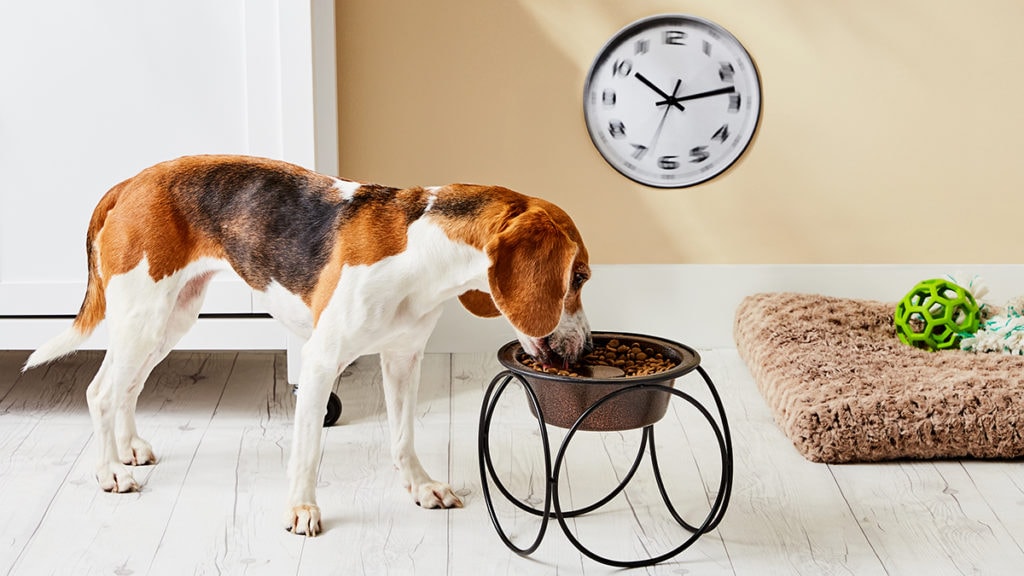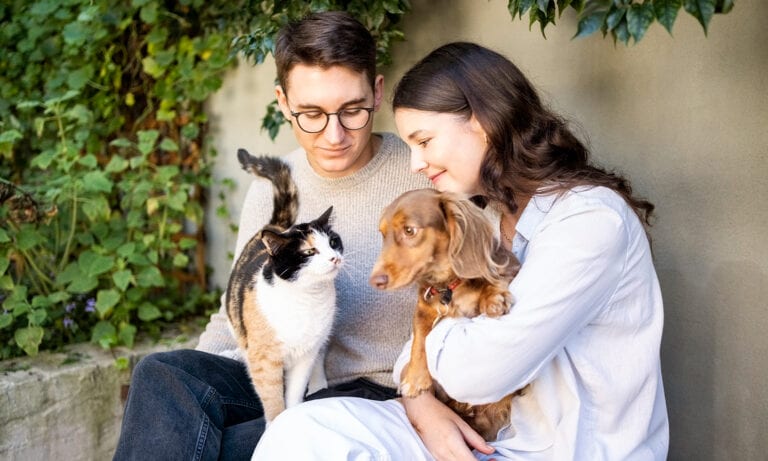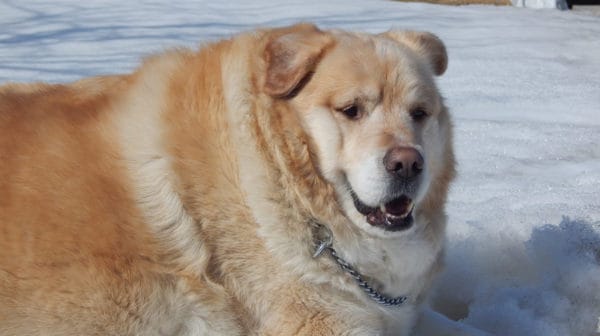Let’s face it. Dogs sometimes will eat more than their fill—and quickly too! If you’ve ever watched your dog eat, there are times it looks more like a race than a casual dinner. Getting your pup to refrain from gobbling up her food with the help of a dog slow feeder is smart, especially given that between 30 percent and 50 percent of dogs in this country are obese, reports Ann Hohenhaus, DVM, staff doctor at NYC’s Animal Medical Center.
Here’s what you need to know about using a slow feeder so your pet learns to munch mindfully.
Why Are Dogs Obese?
Our fur babies are bigger than ever because too many calories are going in and too few are being expended as energy, says Dr. Hohenhaus.
“And while you might believe your dog has some kind of thyroid condition that’s causing her weight gain, this is very rarely the case,” she adds.
The main culprit of obesity in pets is too much food—and too many snacks.
“We think it’s so cute when our pet sits near the dinner table, but those pieces of bacon, cheese and toast add up quickly in terms of additional—and unnecessary—calories,” Dr. Hohenhaus says.
How Much Food Should Dogs Eat?
Maintaining portion control is crucial when it comes to a dog losing weight, much the way it is for people.
“If you allow free access to food, your dog or cat will pack on the pounds,” Dr. Hohenhaus says.
Speak with your vet to find out how often your particular breed should be eating and what type of food is best for her age and weight. Then, make sure you only give her the proper amount.
Using a cup or simply thrusting your hand into the bag means you’ll be doling out different amounts every time.
“The best way to ensure your pet is getting the proper amount of kibble is to weigh it with a kitchen scale,” Dr. Hohenhaus recommends.
How Can a Slow Feeder Help?
If your furry friend finishes her dinner in three bites, it might be worth considering slow feeders.
A slow feeder is a dog bowl with built-in obstacles, mazes or grids that help spread the food out and make eating more of a challenge. Using a slow feeder means your dog has to nose around in the dish to extract her food, which reduces the pace at which she can eat.
Feeding toys, which spill out kibble as your dog plays with them, are another option.
“Feeding toys are good ideas, too, because they make your pet work to get the kibble to fall out,” Dr. Hohenhaus says.
If you have a dog breed that was bred to hold a job (like a Border Collie, who loves to herd sheep), consider a feeding toy or slow feeder as entertainment.
“These working dogs need to be kept occupied, so these products are of great help,” Dr. Hohenhaus says.
Two to try: the Outward Hound Fun Feeder Interactive Dog Bowl and the Aikiou Junior Dog Slow Bowl.
Which Breeds Are More at Risk of Obesity?
Certain breeds are predisposed to obesity, says Dr. Hohenhaus, so ask your vet about your own dog and whether a slow feeder is a smart option.
“Some Golden Retrievers are slender, but others can be huge, like pieces of furniture,” Dr. Hohenhaus. “And English Bulldogs can eat so much they look like footstools.”
“Labradors have never met a bowl of food they didn’t like,” she adds.
Other breeds that may need to watch their waistlines include Cocker Spaniels and Beagles.
To ease the pace of your pup’s meals, check out the Omega Paw Stainless Steel Portion Pacer or the Platinum Pets Olympic Diner Elevated Slow Dog Bowl.
Can Exercise Help?
For an obese dog, exercise not only helps with weight loss, but also improves alertness and builds trust and a stronger bond with their owner. Start slow and speak with your veterinarian about an exercise plan that’s right for your pet.
Dr. Hohenhaus recommends getting an obese dog moving with an extra walk or longer outings each day.
“Avoid the elevator and take the stairs in your apartment building or find some stairs in a nearby park,” she suggests.
A good game of fetch with a ball or running up hills are two other healthy ways to help your pup slim down.
Share:














